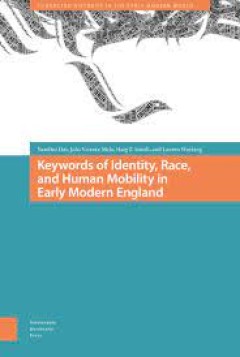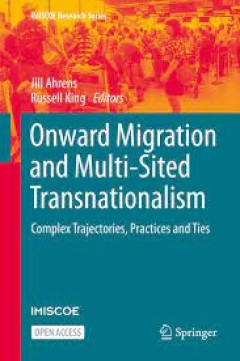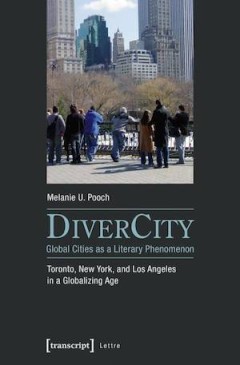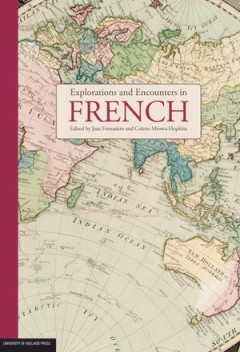Filter by

From Orientalism to Cultural Capital : The Myth of Russia in British Literatu…
From Orientalism to Cultural Capital presents a fascinating account of the wave of Russophilia that pervaded British literary culture in the early twentieth century. The authors bring a new approach to the study of this period, exploring the literary phenomenon through two theoretical models from the social sciences: Orientalism and the notion of «cultural capital» associated with Pierre …
- Edition
- -
- ISBN/ISSN
- 9783034322034
- Collation
- XIV, 338 halaman
- Series Title
- -
- Call Number
- 800 SOB o

Keywords of Identity, Race, and Human Mobility in Early Modern England
What did it mean to be a stranger in sixteenth- and seventeenth-century England? How were other nations, cultures, and religions perceived? What happened when individuals moved between languages, countries, religions, and spaces? Keywords of Identity, Race, and Human Mobility analyses a selection of terms that were central to the conceptualisation of identity, race, migration, and transcultural…
- Edition
- -
- ISBN/ISSN
- 9789048552283
- Collation
- 358 halaman
- Series Title
- Connected Histories in the Early Modern World
- Call Number
- 305 DAS k

A Handbook to Eddic Poetry Myths and Legends of Early Scandinavia
This is the first comprehensive and accessible survey in English of Old Norse eddic poetry: a remarkable body of literature rooted in the Viking Age, which is a critical source for the study of early Scandinavian myths, poetics, culture and society. Dramatically recreating the voices of the legendary past, eddic poems distil moments of high emotion as human heroes and supernatural beings alike …
- Edition
- -
- ISBN/ISSN
- 9781316471685
- Collation
- -
- Series Title
- -
- Call Number
- -

Onward Migration and Multi-Sited Transnationalism Complex Trajectories, Prac…
This open access book brings novel perspectives to the scholarship on transnational migration. The book stresses the complexity of migration trajectories and proposes multi-sited field studies to capture this complexity. Its constituent chapters offer examples of onward migration spanning all major world regions. The contents exemplify a range of interdisciplinary approaches, including both qua…
- Edition
- -
- ISBN/ISSN
- 9783031125034
- Collation
- -
- Series Title
- -
- Call Number
- -

DiverCity – Global Cities as a Literary Phenomenon : Toronto, New York, and…
Based on the structured analysis of selected North American novels, this work examines global cities as a literary phenomenon (»DiverCity«). By analyzing Dionne Brand's Toronto, »What We All Long For« (2005), Chang-rae Lee's New York, »Native Speaker« (1995), and Karen Tei Yamashita's Los Angeles, »Tropic of Orange« (1997), Melanie U. Pooch provides the connecting link f…
- Edition
- -
- ISBN/ISSN
- 9783837635416
- Collation
- -
- Series Title
- -
- Call Number
- 800 POO d

Histories of technology, the Environment and Modern Britain
Histories of Technology, the Environment and Modern Britain brings together historians with a wide range of interests to take a uniquely wide-lens view of how technology and the environment have been intimately and irreversibly entangled in Britain over the last 300 years. It combines, for the first time, two perspectives with much to say about Britain since the industrial revolution: the histo…
- Edition
- -
- ISBN/ISSN
- 9781911576570
- Collation
- -
- Series Title
- -
- Call Number
- 900 HIS h

Explorations and Encounters in French
With a title derived literally from the explorations of the French in the Pacific and metaphorically from classroom encounters with another culture—both of which form important subsections to the volume—Explorations and Encounters in French actively seeks to unite those fields of enquiry sometimes seen as separate, namely, culture and language. The essays selected for inclusion in Explorati…
- Edition
- -
- ISBN/ISSN
- 9780980672329
- Collation
- 322 pages
- Series Title
- -
- Call Number
- 940 FOR e

Texts, Contexts and Intertextuality : Dickens as a Reader
While Dickens used to be seen as a writer of shallow and sentimental children’s literature, as the prolific caterer to the new market of mass literature, this collection of essays shows that Dickens was not only a reader of high-brow literature, but also expected his readers to understand them in the context of contemporary scientific and economic debates. Covering a wide range of writers –…
- Edition
- -
- ISBN/ISSN
- 9783847102861
- Collation
- -
- Series Title
- Close Reading
- Call Number
- 920 KOC t

A Handbook of the Cornish Language Chiefly in its Latest Stages, with Some A…
'Why should Cornishmen learn Cornish?' asked Henry Jenner (1848–1934) in the preface to this 1904 publication, dating from the beginnings of the Cornish revival. Jenner admits that 'the reason ... is sentimental and not in the least practical'. Born in Cornwall, but raised in south-east England, Jenner worked at the British Museum from 1870 to 1909 and was elected a fellow of the Society of A…
- Edition
- -
- ISBN/ISSN
- 9781139207119
- Collation
- -
- Series Title
- Cambridge Library Collection - Linguistics
- Call Number
- -

A Hand-Book for Travellers in Spain, and Readers at Home
Targeted at both intrepid travellers and 'readers at home', this two-volume account of Spanish history, topography and culture by Richard Ford (1796–1858) combines the rigour of a gazetteer with the humour and pace of a private travel diary. First published in 1845, as part of John Murray's series of guidebooks, the work made an immediate impact upon the reading public, and it was celebrated …
- Edition
- -
- ISBN/ISSN
- 9781139096157
- Collation
- -
- Series Title
- Cambridge Library Collection - Travel, Europe
- Call Number
- -
 Computer Science, Information & General Works
Computer Science, Information & General Works  Philosophy & Psychology
Philosophy & Psychology  Religion
Religion  Social Sciences
Social Sciences  Language
Language  Pure Science
Pure Science  Applied Sciences
Applied Sciences  Art & Recreation
Art & Recreation  Literature
Literature  History & Geography
History & Geography